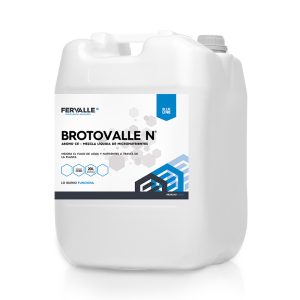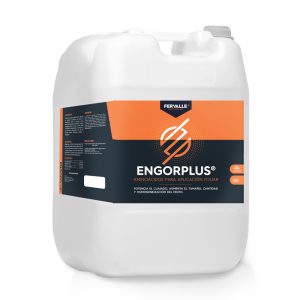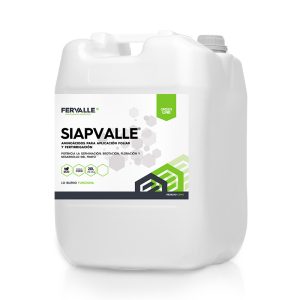CULTIVATION STRATEGY FOR

Grapefruit cultivation
The grapefruit is characterised by being the largest citrus fruit. It has a taste between acid and bitter and in recent years has been gaining popularity.
At present, the fruit is predominantly marketed in the United States, South America and Israel. In Spain, its consumption is less common, but in recent years its production has grown considerably, mainly on the Mediterranean coast and in Andalusia.
-

BROTOVALLE®N
Sap Inducer -

ENGORPLUS®
Fattening Enhancer -

SIAPVALLE®
Powerful Amino Acid with Staggered Energy Contribution
» Grapefruit plantation
·When are grapefruits planted?
The best time of year to plant grapefruit trees is in spring, after overcoming the risk of flash frosts.
Edaphoclimatic requirements
·Soil
Grapefruits prefer sandy or sandy loam soils, well drained, deep, fresh and without limestone. The pH should range between 6 and 7 and these are trees that do not tolerate salinity.
·Climate
Grapefruit is a subtropical species. Temperature is the most important environmental factor influencing the colour of the fruit both externally and internally. Grapefruit therefore requires warm temperatures and does not tolerate frost. It is not very cold hardy and does not require chilling hours for flowering.
As a curiosity, it is worth mentioning that relative humidity influences the shape of the fruit; Grapefruits grown in tropical or subtropical areas have a flattened shape, while those grown in more arid areas have spherical fruits.
Besides, it is a tree that requires a lot of rainfall, which must be supplemented by irrigation in the event of insufficient rainfall.
- Orientation on the plot
The grapefruit plantation must be oriented towards the sun and sheltered from the wind. It is a tree that requires a lot of light for the flowering and fruiting processes and is very sensitive to wind, and may suffer fruit loss due to vibration transmission.
» Care required by the grapefruit
·Soil preparation for grapefruit cultivation
Soil preparation for grapefruit consists of:
- Eliminating weeds
- Aerating topsoil
- Applying fertilizers or organic matter
- Increasing water retention capacity
- Preparing irrigation systems
·Grapefruit irrigation
Like all citrus fruits, grapefruits require a large amount of water. Frequent and abundant watering is recommended, preventing the soil from becoming too dry or waterlogged.
The most advisable irrigation system for grapefruit is the localized high-frequency one. Nowadays, in-ground drip irrigation is commonly used, which optimises irrigation and improves the efficiency of nitrogen fertilisation. In addition, this irrigation system reduces the evapotranspiration of the crop.
·Grapefruit pruning
Like the orange tree, the grapefruit tree has a habit of ball formation and production on the periphery. For this reason, they are pruned in order to lobulate the shapes (make them protruding) to improve the light reaching the surface and thus increase production. However, grapefruit wood is very sensitive to sunburn, so care must be taken to ensure that the main branches are not left unprotected from shoots and leaves to prevent direct sunlight.
Some authors recommend pruning every year while others recommend pruning every 3-4 years to clean the centre of the tree.
It is recommended to prune at the end of winter, before the tree resumes its growth, in order to eliminate weak and diseased branches, and to clean the center so that the light can reach all the branches. However, it is important to point out that it is advisable not to prune excessively, since the harvest decreases proportionally to the intensity of the pruning.
» Nutrients needed for growing grapefruit
The main nutrients that grapefruit crops demand are nitrogen, potassium, phosphorous and iron.
- Nitrogen: It’s an essential element for growth, flowering, productivity and fruit quality.
- Potassium: It’s essential as a coenzyme and in protein synthesis, photosynthesis and carbohydrate metabolism.
- Phosphorus: It’s involved in the metabolism of sugars and nucleic acids and in the plant’s energy processes.
- Iron: It’s essential for photosynthesis and respiration.
Fertiliser for grapefruit
- What fertilisers does grapefruit need for its cultivation?
Grapefruits require a lot of fertilizers. They begin to pay at the beginning of the second sprouting in each irrigation. July, August and September are the months with the highest demand for nutrients.
For the organic cultivation of grapefruit, organic fertilisers will be applied, such as manure, compost or earthworm humus, as well as those formulated based on algae, minerals or other natural elements.
Some of the fertilizers recommended for growing grapefruit from Fervalle are Brotovalle N, Engorplus or Siapvalle.
Brotovalle N is a compound fertiliser, rich in organic elements, copper, manganese and zinc. In addition, its formulation contains nitrogen, which boosts the growth and production of the crop. Its advantages include:
- It induces the plant to synthesise essential molecules
- It increases crop quality and yields
- It reduces the effects of unfavourable situations during the life cycle of the plant
Engorplus is a fertiliser composed of free amino acids, organic acids and vitamins (A, B1, B2, B12, C and D6). Some of its benefits are:
- It increases cell division and fruit set.
- It induces the synthesis of proteins involved in plant growth and development.
- It guarantees a homogenization in the size of the fruit.
Siapvalle is a bio-stimulant rich in L-amino acids of animal origin. Its functions include:
- It provides energy to trees.
- It increases the production, caliber and homogenization of the harvest.
- It chelates soil nutrients and transports them from the roots to the most apical areas.
» Grapefruit picking
According to the seasonal fruit and vegetable calendar in Spain, the grapefruit season runs from December to April. However, some varieties are also harvested in November and May.
Grapefruit harvesting is done mechanically or manually. Generally, farmers prefer the second option in order to avoid skin damage. The harvest must be done in the absence of fog or dew and when the fruit has fully matured since, once collected, the maturation does not continue as it happens with other fruits.




